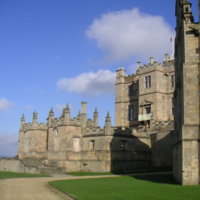
Slavery and the British Country House
In 2007 English Heritage (now Historic England) commissioned research into the linkages between properties in its care and transatlantic slavery, to coincide with events to commemorate the bicentenary. A report produced by historian Miranda Kaufmann identified 26 properties with some level of connection to slavery or abolition. As a result, more detailed surveys of four sites - Bolsover Castle, Brodsworth Hall, Marble Hill and Northington Grange - were commissioned in 2008, and the findings presented at the 'Slavery and the British Country House: mapping the current research' conference in 2009. The conference was organised by English Heritage in partnership with the University of the West of England, the National Trust and the Economic History Society. Findings were later published in 'Slavery and the British Country House' (2013), edited by Madge Dresser and Andrew Hann. The publication and the 2008 reports are available to download from Historic England's website.
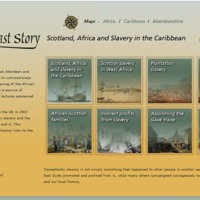
A North East Story: Scotland, Africa and Slavery in the Caribbean
This online exhibition and learning resource linking the history of transatlantic slavery to North East Scotland was organised by an Aberdeen and Aberdeenshire Bicentenary Committee, including representatives from Aberdeenshire Council, Aberdeen City Council, the University of Aberdeen, the Robert Gordon University and the African and African-Caribbean communities. It followed on from a service of commemoration and a series of public lectures sponsored by the Committee in 2007. The exhibition logo is inspired by the mythical Sankofa bird, a cultural symbol of the Akan-speaking peoples of Ghana in West Africa. Featured here are a number of resources available to download from the North East Story website.
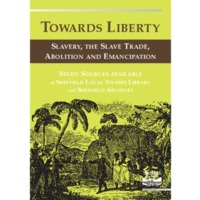
Towards Liberty: Slavery, the Slave Trade, Abolition and Emancipation
This booklet was produced to mark the bicentenary in 2007 and to highlight the material available in Sheffield Local Studies Library and Sheffield Archives for the study of slavery, the slave trade, abolition movements and emancipation. It looks, in particular, at the role of the city of Sheffield and the surrounding areas, and its local residents. Sheffield benefited from the slave system in that goods manufactured in the city's factories were used on the plantations in the West Indies and America. Sugar and coffee produced on the plantations was consumed by residents. There were active anti-slavery groups in Sheffield, including the Ladies Anti-Slavery Society, and petitioning and boycotts were common. Hannah Kilham, a Sheffield Quaker, published a memoir of her experiences in West Africa as a teacher in the 1820s and 1830s.
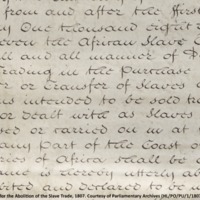
Inhuman Traffic: The Business of the Slave Trade
An exhibition at the British Museum exploring how the transatlantic slave trade functioned. The display examined the commodities involved - tobacco, guns, textiles, sugar, rum - and the ways in which Africa, Europe and the Americas were linked in a global trade network. The exhibition also looked at resistance leaders including Toussaint L'Ouverture, Olaudah Equiano and Nanny of the Maroons, and their struggles to end enslavement. The exhibition was accompanied by a varied public programme at the museum exploring the legacy of the slave trade as part of the Atlantic Trade and Identity season, featuring film screenings, panel discussions, seminars and lectures.
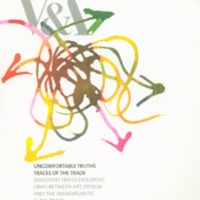
Uncomfortable Truths
Uncomfortable Truths at the Victoria and Albert Museum sought to expose how embedded the transatlantic slave trade was within British culture during the 18th and 19th centuries through art and design. A series of five trails - 'Traces of the Trade' - explored the permanent collections on display through the following themes: Consuming the Black Atlantic, Black Servants in British Homes, Britain and the West Indies, Representing Slavery and Abolitionism, Gold and Slaves Transnational Trade Links. An exhibition of contemporary art examined the impact of the legacies of slavery on modern art and design. The Victoria and Albert Museum commissioned new works by Yinka Shonibare, Romauld Hazoume, Julien Sinzogan and Keith Piper. These and other contemporary interventions by a total of 11 artists were displayed throughout the museum. This exhibition later toured to Ferens Art Gallery in Hull.
The 'Truth and Rights' season of events highlighted often untold stories of Black British heroes, including focus on the actor Ira Aldridge. Visitors were also offered discussions, debates, displays and an eight week free art course. A two-day conference, 'From Cane Field to Tea Cup: The Impact of the Transatlantic Slave Trade on Art and Design' focused on V&A collections took place in February 2007.

1807 and Tate
The industrialist Sir Henry Tate was the early benefactor of the Tate Collection, rooted in the art of the 18th and 19th centuries. Tate's fortune - much of which was spent on philanthropic initiatives in Britain - was founded on the importation and refining of sugar, a commodity inextricably linked to slave labour in the Caribbean. There were a number of initiatives across the Tate galleries to explore these connections. 'Tracks of Slavery' at Tate Britain displayed a selection of images from the Tate's collections which provided a commentary on the relationship of British society with slavery. Displays at Tate Modern included a selection of new acquisitions linked by their treatment of issues arising from slavery and oppression. Tate Liverpool exhibited paintings by Ellen Gallagher. Special events included Freedom Songs at Tate Britain (workshops to create poetry and music by exploring themes of slavery and freedom) and a discussion at Tate St Ives looking at the links between Cornish maritime traditions, the slave trade and the Caribbean.
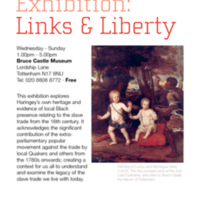
Links and Liberty
An exhibition at Bruce Castle Museum (in partnership with Euroart Studios) explored the transatlantic slave trade, Haringey's heritage relating to the trade and its legacy, and the historic Black presence in the borough from the 16th century onwards. There was a particular focus on the painting of Lucius and Montague Hare, sons of Lord Coleraine (former owner of Bruce Castle), with their African servant. The exhibition also looked at the extra-parliamentary popular movement against the trade by local Quakers such as Priscilla Wakefield and others. Contemporary dance workshops for secondary schools were led by dance company Movement Angol.
The Links and Liberty exhibition included 'Stolen', a life-size installation by artists at Euroart Studios (John Fowler, Lorraine Clarke and Nigel Young) of a section of a slave ship. School pupils were encouraged to climb inside to imagine conditions on board.
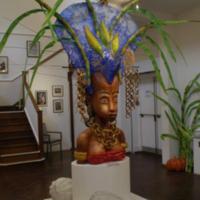
Parallel Views: Black History in Richmond
The Parallel Views exhibition and its associated community engagement programme explored the relevance of the bicentenary for communities in the London Borough of Richmond upon Thames, uncovering local associations with slavery and its abolition. It also told the parallel story of twin town Richmond, Virginia, USA, to broaden understanding of the transatlantic slave trade and the impact of its demise. The exhibition examined evidence of individuals of African origin who had come to Richmond, and residents with financial links to slavery and the slave trade, and to abolitionism. A film piece by choreographer and dance historian Dr Rodreguez King-Dorset explored the use of dance within the free Black community in London during the era of abolition. A display of contemporary artwork responded to the ideas of the exhibition. A sculpture by carnival artist Carl Gabriel linked consumers in Richmond and the conditions of production of slave-grown crops. The design was inspired by a series of workshops with local families. Artist-led workshops for children and young people led to the creation of a carnival costume piece which was included in the exhibition.
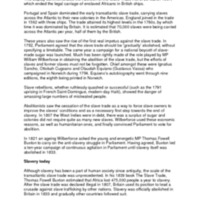
Thomas Fowell Buxton and the Anti-Slavery Movement
This small exhibition at Norwich Castle was part of the Norfolk's Hidden Heritage project. It included portraits of Norfolk-based Thomas Fowell Buxton, who was instrumental in the cause for abolition of British colonial slavery, and Amelia Opie, Norwich poet, author and anti-slavery campaigner. The exhibition also featured rare decorative items from the Castle collections relating to the consumption of tea and sugar, and 18th century books loaned by the Norfolk Heritage Centre. An events programme included lunchtime gallery talks and school activities.
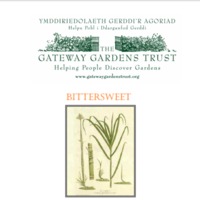
Bittersweet: Sugar, Spice, Tea and Slavery
The Bittersweet programme by the Gateway Gardens Trust involved 80 free guided garden visits over two years, around more than 30 gardens in Wales with a range of community groups, schoolchildren and lifelong learners. The themes of the visits and a mobile exhibition were the links between the slave trade and historic gardens, their makers, what they planted, Welsh abolitionists and the wider links with local communities in Wales. Historic gardens provided the starting point, looking at how everyday vegetables and fruits - beans, potatoes, tomatoes etc. - first reached the UK from the Americas. The project also looked at the history of afternoon tea, and the links between sugar, cotton and tea and slavery. The groups reflected on how many industries, grand houses and gardens were built from wealth linked to slavery, such as Cyfarthfa Ironworks in Merthyr and the expansion of the slate industry at Penrhyn Quarry. Early 18th century-style newspapers were produced, aimed at schoolchildren and adults.
Gardens involved included Cardiff’s Bute Park, Swansea’s Singleton Park, the National Botanic Garden in Carmarthen, Gwydir Castle in Llanrwst, Dyffryn Gardens, Portmeirion, Penrhyn Castle, Picton Castle, Dinefwr Park and Castle and Aberglasney Gardens.
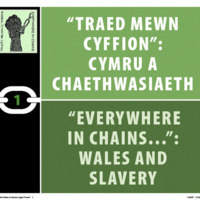
Everywhere in Chains: Wales and Slavery
Everywhere in Chains was an umbrella project created for the bicentenary commemorations in 2007, by a collaboration between Amgueddfa Cymru - National Museum Wales, the National Library of Wales, University of Wales, Bangor and CyMAL: Museum Archives and Libraries Wales (part of the Welsh Assembly Government). An exhibition explored Welsh involvement in slavery, especially focusing on the transatlantic slave trade and its abolition, the Black presence in Wales, and legacies of slavery. This was shown at the National Waterfront Museum in Swansea from May to November 2007 before touring to Wrexham County Borough Museum. The touring version of the exhibition was funded by the Welsh Assembly Government. The exhibition in Wrexham included discussion of the painting 'A Negro Coachboy', thought to commemorate a black servant of John Meller, owner of the Erddig estate in the 18th century.
Alongside the exhibition, the Everywhere in Chains programme also included lectures, formal learning activities and performances. An educational pack was produced by CyMAL and distributed to every school in Wales in 2009-2010. A community project created a forum in which participants from many cultural backgrounds could voice their ideas about enslavement. The Everywhere in Chains Community Heritage Toolkit captured the learning from this project. The toolkit, launched in 2009, was produced to help individuals, groups and organisations to work with culture and heritage providers to undertake projects focused on the role of Wales in the transatlantic slave trade and issues of modern slavery.
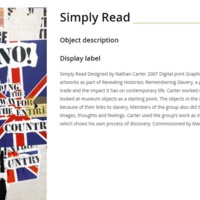
Revealing Histories: Remembering Slavery (Manchester Art Gallery)
As part of the Revealing Histories: Remembering Slavery project, Manchester Art Gallery highlighted items in its collection of fine art and decorative objects which revealed the wealth generated by the region's involvement in the transatlantic slave trade and the public's consumption of sugar, tea, coffee and tobacco. Additional special events included Tina Tamsho-Thomas performing poetry commissioned in response to the objects connected to sugar. In the exhibition 'Manchester Attitude', local community groups created a new display to express their thoughts about the legacy of Manchester's involvement in the transatlantic slave trade. Examples of these community-led artworks include 'Injustice' (with artists Colette Gilmartin and Tony Curry) and 'Simply Read' (with artist Nathan Carter), available to view on Manchester Art Gallery's website.
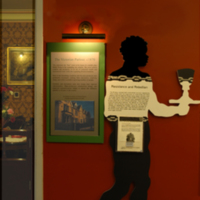
Unfair Trade
York Castle Museum's Unfair Trade exhibition used the museum's collections to explore slavery from the viewpoint of ordinary people, and how consumption of slave-produced everyday commodities - sugar, tea, coffee, cocoa - contributed to the slave trade. It also looked at the part played by York in the abolition of the slave trade and slavery, with the many Quakers of the city supporting William Wilberforce and helping to finance his election campaign. The exhibition continued the focus on consumption into modern life by asking visitors to consider where the products they buy come from. York Castle Museum features a recreated Victorian street, Kirkgate, with its own newspaper, 'The Kirkgate Examiner'. A special edition was distributed to coincide with the exhibition.
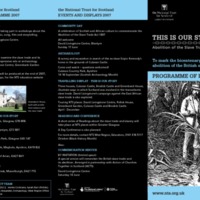
This is Our Story
To mark the bicentenary, the National Trust for Scotland put together a wide-ranging programme of events to engage their audiences with Scottish connections to slavery and abolition. Three National Trust for Scotland properties in the West of Scotland – Culzean Castle, Brodrick Castle and Greenbank House – illustrate the ways in which Scotland was involved in the transatlantic slave trade. A touring exhibition based on this new research was shown at these sites and others in the West of Scotland. The Beckford Collection of furniture, silver and China at Brodrick Castle, on the Isle of Arran, once belonged to William Beckford, owner of several sugar plantations in the West Indies. Scipio Kennedy from ‘Guinea’ lived at Culzean Castle, Ayrshire, from 1710, first as a slave and then as a paid servant. The Allason brothers of Greenbank House were traders in tobacco and slaves. David Livingstone spent much of his life campaigning against the slave trade based in East Africa. His work is remembered at the David Livingstone Centre in Blantyre.
The 2007 Learning Programme involved workshops for local community groups and a resource pack for teachers and youth leaders. Events included a celebration of Scottish and African culture at the David Livingstone Centre; a survey and excavation in search of the ex-slave Scipio Kennedy’s home in the grounds of Culzean Castle; and a Commemoration Service arranged in partnership with Action of Churches Together in Scotland (ACTS).
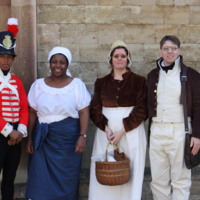
Beyond the Bicentennial
In collaboration with the Peterborough branch of the African Caribbean Forum, Peterborough Museum hosted 'Beyond the Bicentennial, 1788-1838: Exploring 50 Years of the Slave Trade'. The exhibition's focus was the fifty years leading up to the end of slavery in the British Empire, 1833. It highlighted museum objects and local connections to the era of abolition, including black communities in Peterborough and links between slave-produced sugar and the rise of tea drinking in Georgian Britain. Two special event days included Georgian period re-enactors, historical talks on slavery, African drumming workshops, African food tasting and community displays.
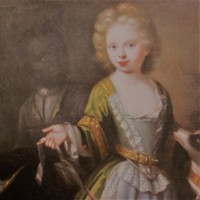
Revealed: Luxury Goods and the Slave Trade
Remembering Slavery 2007 was a regional initiative involving museums, galleries and other cultural organisations across the North East of England in a programme of exhibitions, events, performances, lectures and activities to explore the themes of slavery and abolition.
As part of the initiative, the Bowes Museum in Barnard Castle exhibited art objects from its collection, which traced the European demand for luxury goods linked to the system of plantation slavery, such as tobacco, sugar and indigo. For example, the exhibition included a number of sugar moulds and designs, alongside tobacco graters and tins. The recently conserved 'Girl with a Dog' by Philip Vilain (c. 1708) was also on display; the painting features a black servant faded into the background, revealing of eighteenth-century British society's racial divisions.
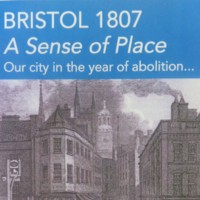
Bristol 1807: A Sense of Place
As part of the Abolition 200 programme, the Bristol 1807 project set out to explore the lives of ordinary Bristolians in 1807. An exhibition in the Central Library, and a series of touring exhibitions in Bristol's libraries and community centres explored society, culture, trade and travel in 19th century Bristol, a city and port with many ties to transatlantic slavery. The project collaborated with local schools to provide creative art workshops for children around themes of slavery and freedom. There were also 'Treasures in Store' hands-on sessions with rare library artefacts concerned with the period of abolition including books, newspapers and everyday objects. A book emerging from the project, 'Bristol in 1807: Impressions of the City at the Time of Abolition' by Anthony Beeson, was published in 2009.
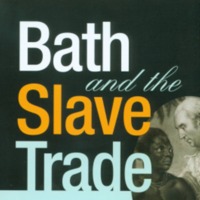
Bath and the Slave Trade
Bath Preservation Trust curated a series of exhibitions across five of their sites, with a focus on ‘unlocking the legacies of the slave trade'. Beckford’s Tower & Museum hosted Big Spenders: The Beckfords and Slavery; displays here and at the Holburne Museum were designed to explore the Beckford family connections to plantations in Jamaica, through objects, paintings and furniture. The Herschel Museum's Slaves to Fashion exhibition, and Number 1 Royal Crescent's Elegance and Exploitation trail looked at how involvement with the slave trade enhanced the luxury of 18th century life in Bath. At the Building of Bath Museum, Selina’s Web revealed the complex attitudes of Selina, Countess of Huntingdon, who sought to promote the publications of free slaves whilst also being a slave owner. A lecture series ran alongside these exhibitions.